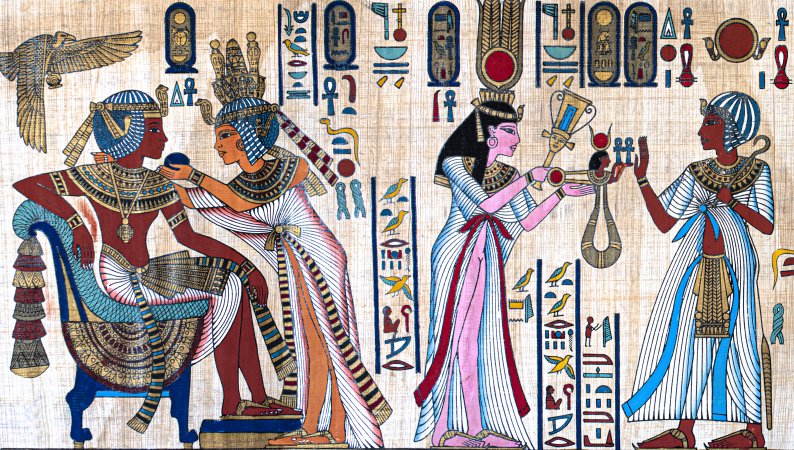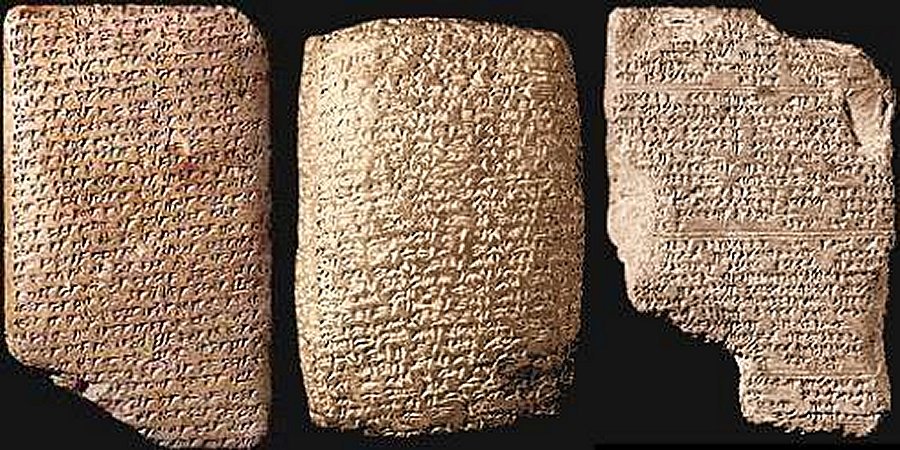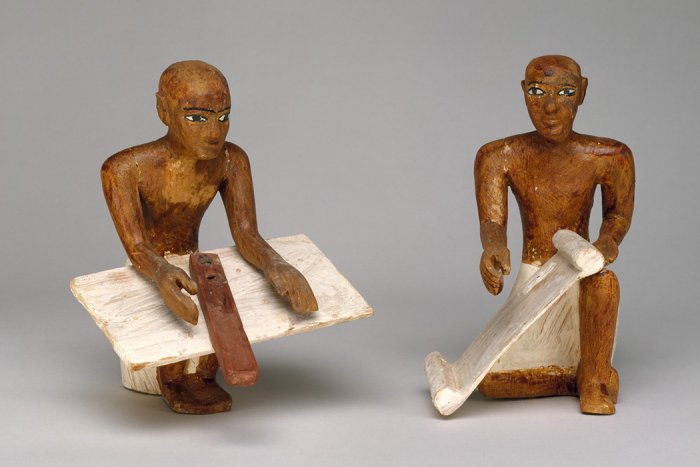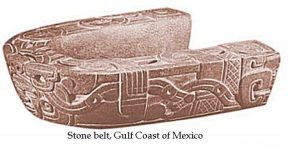Letters Reveal How Ancient Egyptians Argued With Friends And What Angered Them
Ellen Lloyd - AncientPages.com - As time passes, every society changes one way or the other, but some things, like human behavior, will always remain the same, more or less. Feelings like anger, disappointment, frustration, and happiness are universal and independent of time and place.
Ancient peoples’ values may have changed, but negative and positive feelings will always be part of human nature.

Ancient Egyptians had the same feelings as we today, and could be angry, frustrated, or simply just happy. Credit: AliaksandrBS - Adobe Stock
By studying several letters from Deir el-Medina, a village comprising artisans working on pharaonic tombs, Egyptologist Deborah Sweeney has gained a unique insight into how ancient Egyptians expressed frustration, confusion, and anger to friends or family members.
“Although Papyri Deir el-Medina IV, V and VI have been published, translated and included in anthologies of Egyptian texts, their interest is by no means exhausted. Not only do these texts contain interesting observations on friendship, which help us understand how the ancient Egyptians understood this relationship, they also increase our awareness of what the Egyptians actually did when they quarreled and made up. This study forms part of a wider research project on the themes of sin, forgiveness, and punishment in ancient Egypt as reflected in everyday texts such as personal correspondence.” 1
Whether political, military or purely personal, studying ancient correspondence provides valuable knowledge about human relationships.
Studies of 382 known clay cuneiform tablets, known as the Amarna Tablets, or simply Amarna Letters as they are called these days, have proven important to understand ancient Egyptians’ contacts with their neighbors.

Examples of "The Amarna Letters" were discovered in 1887. There are 382 known clay cuneiform tablets, whose contents shed light on Egyptian relations with Babylonia, Assyria, Mitanni, the Hittites, Syria, Palestine and Cyprus. They are important for establishing both the history and chronology of the period. Credit: EgyptOnline.com
The Amarna Letters are mostly diplomatic letters (with a few myths and epics) dated to an interesting historical period in ancient Egypt, related to the reigns of pharaoh Akhenaten of the 18th Dynasty of Egypt and his wife Nefertiti, and Amenhotep III (1402-1364). The tablets “deal with a variety of subjects, such as exchange of gifts between rulers, news about events in distant Phoenician cities: Byblos, Tyre, various requests regarding food, military affairs, and diplomatic marriages.” 2
The Amarna Letters are of great historical value, but it’s also very interesting to learn how ordinary people interacted with their friends and family.
The ancient letters studied by Sweeney reveal how people reacted when they were ignored or someone did not keep their part of the bargain. One ancient writer complained about failing as a friend. Another one was disappointed someone hadn’t been in touch for long.
Just like in our modern society, ghosting friends and ignoring agreed-upon favors acted as violations of the “social obligations” of friendship.”
 Scribes from Meketre's Model Granary ca. 1981–1975 B.C. Credit: MET
Scribes from Meketre's Model Granary ca. 1981–1975 B.C. Credit: MET
One Egyptian scribe, “named Nakhtsobk writes to “the crew member Amennakhte.” After hailing his longtime friend and wishing him well, Nakhtsobk says plaintively, “What offence have I done against you? Aren’t I your old eating companion?”
Nakhtsobk doesn’t understand what he’s done wrong for Amennakhte to ignore him and, in fact, try to get him banned from the entire village. This is hardly Nakhtsobk’s understanding of being a good friend! What could have caused Ammenakhte to not only discard their longstanding bond but to actively try to keep Nakhtsobk out of his town? We’ll never know, but such a severe action, to sever a friendship, is one that’s all too timeless.” 3
In another letter, an anonymous writer expresses frustration asking, “What’s the matter with you?” The writer snarks that he’s never been able to understand the addressee’s behavior.” 3
It seems the writer has assumed that “friends care for each other, help one another out and comply with each other’s requests,” Sweeney notes—a social contract the addressee has violated.
Yet, another writer, whose name we do not know, “ tells the addressee that a woman—likely someone related to, or associated with, the addressee—has run away to Deir el-Medina and he has taken her in. He’s asking the addressee for rations—ointment, in this case—to support his new guest; the addressee hasn’t looked after the woman well in the past, he says, and admonishes the addressee to do better going forward. Finally, the writer complains that he‘s always the one who invests time and writes to the addressee—but never vice-versa.” 3
Studies of such ancient correspondence show much, and yet little has changed in society. Social interactions with friends and family can sometimes lead to misunderstandings, disappointments, and broken promises, and whenever it happens, people express their emotions in letters. The ancient Egyptian letters constitute universal behaviors in every human society.
Written by Ellen Lloyd – AncientPages.com
Expand for references- Sweeney, Deborah. "Friendship and Frustration: A Study in Papyri Deir El-Medina IV-VI." The Journal of Egyptian Archaeology84 (1998): 101-22. Accessed October 18, 2020.
- Sutherland - The Amarna Letters: Diplomatic Correspondence In Ancient Egypt – AncientPages.com
- Carly Silver - How to Fight with Friends in Ancient Egypt, JStor Daily
More From Ancient Pages
-
 Mysterious Ancient Rulers With Elongated Skulls – Who Were They Really?
Featured Stories | May 19, 2015
Mysterious Ancient Rulers With Elongated Skulls – Who Were They Really?
Featured Stories | May 19, 2015 -
 Danger Lurking In The Woods – Mysterious Vanishings, Deaths And Unusual Behavior – Part 3
Featured Stories | Jul 9, 2018
Danger Lurking In The Woods – Mysterious Vanishings, Deaths And Unusual Behavior – Part 3
Featured Stories | Jul 9, 2018 -
 Can Aikman Mounds In Arkansas Explain The Hopewell Culture’s Mysterious Disappearance?
Featured Stories | Apr 30, 2019
Can Aikman Mounds In Arkansas Explain The Hopewell Culture’s Mysterious Disappearance?
Featured Stories | Apr 30, 2019 -
 Oldest Human Remains From Puerto Rico Reveal A Complex Cultural Landscape Since 1800 BC
Archaeology | Apr 27, 2023
Oldest Human Remains From Puerto Rico Reveal A Complex Cultural Landscape Since 1800 BC
Archaeology | Apr 27, 2023 -
 Silver Needle Dismissed As Trash Was Part Of A Stunning Viking Treasure Found By Farmer On Gotland
Archaeology | Nov 17, 2020
Silver Needle Dismissed As Trash Was Part Of A Stunning Viking Treasure Found By Farmer On Gotland
Archaeology | Nov 17, 2020 -
 How Climate Change Contruibuted To The Transition From Nomadic Hunter-Gatherers To Settlement And Farming Societies
Archaeology | Nov 27, 2021
How Climate Change Contruibuted To The Transition From Nomadic Hunter-Gatherers To Settlement And Farming Societies
Archaeology | Nov 27, 2021 -
 Hidden 2,000-Year-Old Roman Road Uncovered In Worcestershire Could Be Of ‘Global Importance’
Archaeology | Nov 12, 2022
Hidden 2,000-Year-Old Roman Road Uncovered In Worcestershire Could Be Of ‘Global Importance’
Archaeology | Nov 12, 2022 -
 Millennia Old Ceremonial Stone Belt And Maya Pok-A-Tok Ball Game
Ancient Traditions And Customs | Nov 28, 2017
Millennia Old Ceremonial Stone Belt And Maya Pok-A-Tok Ball Game
Ancient Traditions And Customs | Nov 28, 2017 -
 Kofun: Megalithic Keyhole-Shaped Tombs That Belonged To High Status People In Japan
Civilizations | Oct 31, 2018
Kofun: Megalithic Keyhole-Shaped Tombs That Belonged To High Status People In Japan
Civilizations | Oct 31, 2018 -
 Spread Of Transeurasian Languages Was Due To Agriculture Study Reveals
Archaeology | Nov 10, 2021
Spread Of Transeurasian Languages Was Due To Agriculture Study Reveals
Archaeology | Nov 10, 2021 -
 DNA Study Reveals How Europe’s Hunter-Gatherers Adapted To A New Way Of Life – Farming
Archaeology | Nov 24, 2015
DNA Study Reveals How Europe’s Hunter-Gatherers Adapted To A New Way Of Life – Farming
Archaeology | Nov 24, 2015 -
 Dargavs: Strange City Of The Dead – Mysterious Village And Ancient Cemetery Shrouded In Myths
Featured Stories | Nov 25, 2017
Dargavs: Strange City Of The Dead – Mysterious Village And Ancient Cemetery Shrouded In Myths
Featured Stories | Nov 25, 2017 -
 2,000-Year-Old Skull Reveals Ancient Romans May Have Been The First To Breed Flat-Faced Dogs
Archaeology | Jun 15, 2023
2,000-Year-Old Skull Reveals Ancient Romans May Have Been The First To Breed Flat-Faced Dogs
Archaeology | Jun 15, 2023 -
 Unravelling The Mystery Of Apollonius Of Tyana – Was He A Superhuman?
Featured Stories | Sep 17, 2015
Unravelling The Mystery Of Apollonius Of Tyana – Was He A Superhuman?
Featured Stories | Sep 17, 2015 -
 Catherine Of Valois – Scandalous Queen Who Caused Drama Even After Her Death
Featured Stories | Feb 4, 2019
Catherine Of Valois – Scandalous Queen Who Caused Drama Even After Her Death
Featured Stories | Feb 4, 2019 -
 142,000-Year-Old Shell Beads Found In A Cave Are The Oldest Known Evidence Of Human Communication
Archaeology | Oct 16, 2021
142,000-Year-Old Shell Beads Found In A Cave Are The Oldest Known Evidence Of Human Communication
Archaeology | Oct 16, 2021 -
 Secrets Of Viking Crystal Sunstones Revealed By Modern Science
Archaeology | Apr 5, 2018
Secrets Of Viking Crystal Sunstones Revealed By Modern Science
Archaeology | Apr 5, 2018 -
 Ancient Secrets Of Iberian Warrior Vase – 2,000-Year-Old Masterpiece Of Art
Archaeology | Dec 5, 2017
Ancient Secrets Of Iberian Warrior Vase – 2,000-Year-Old Masterpiece Of Art
Archaeology | Dec 5, 2017 -
 On This Day In History: Napoleon Exiled To Elba – On Apr 11, 1814
News | Apr 11, 2016
On This Day In History: Napoleon Exiled To Elba – On Apr 11, 1814
News | Apr 11, 2016 -
 City Of Sais: Prehistoric Prestigious Cult Center Of Northern Egypt
Featured Stories | Oct 31, 2016
City Of Sais: Prehistoric Prestigious Cult Center Of Northern Egypt
Featured Stories | Oct 31, 2016
